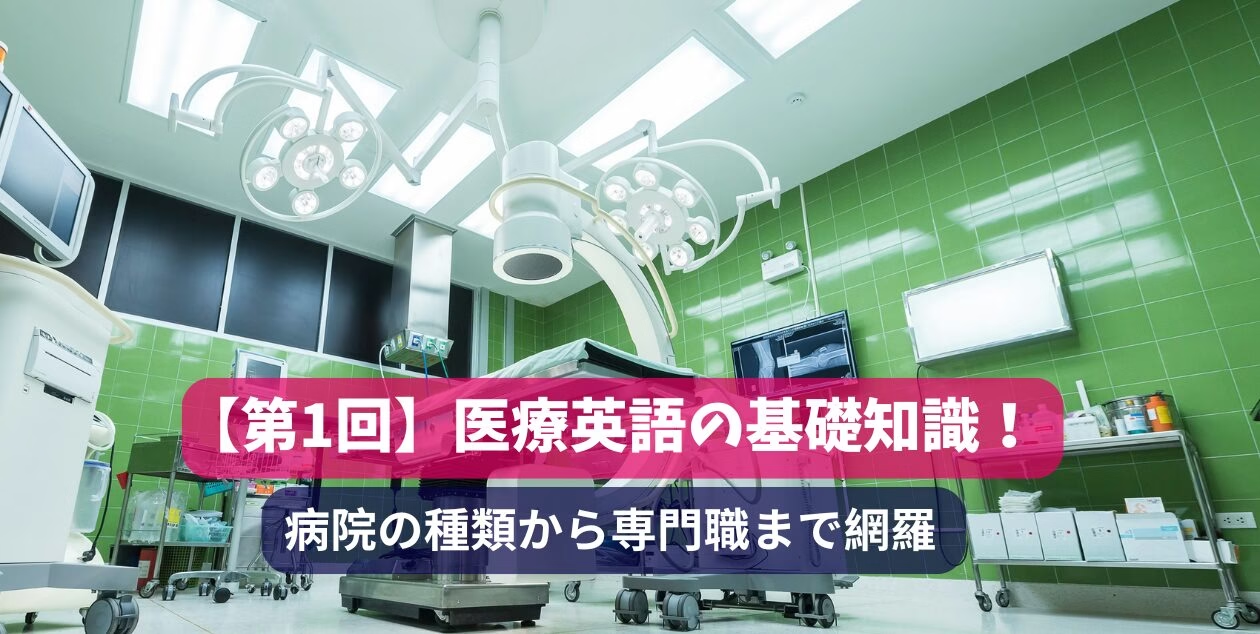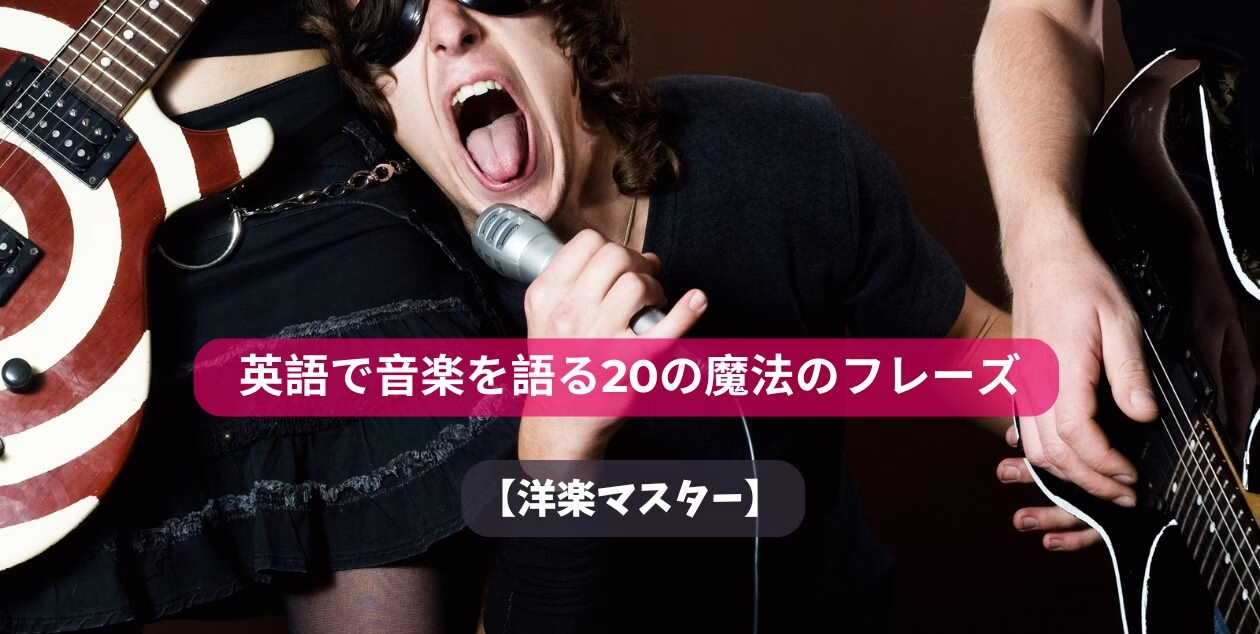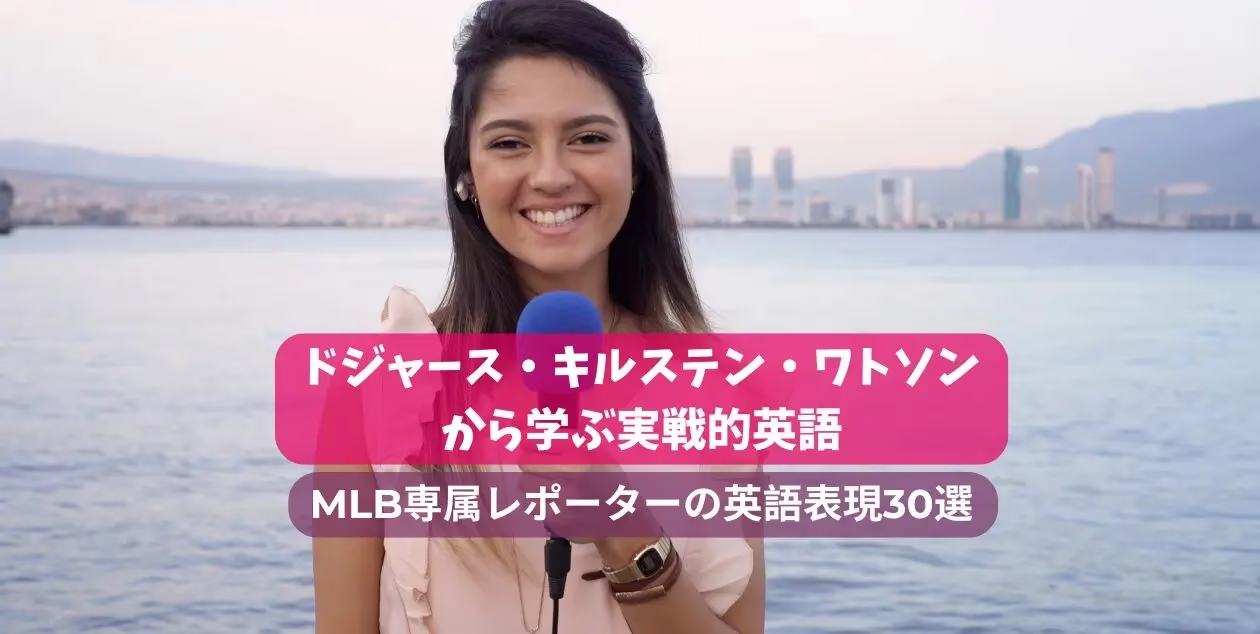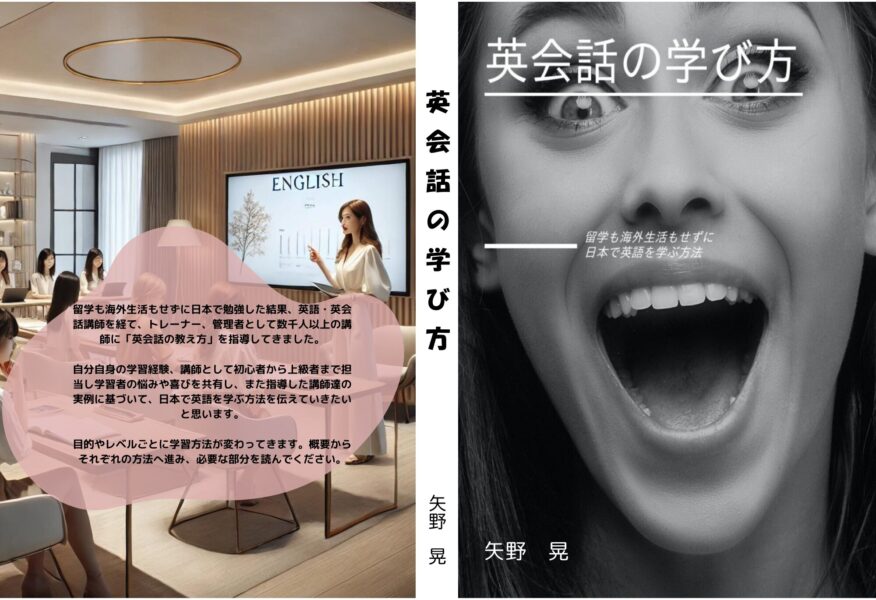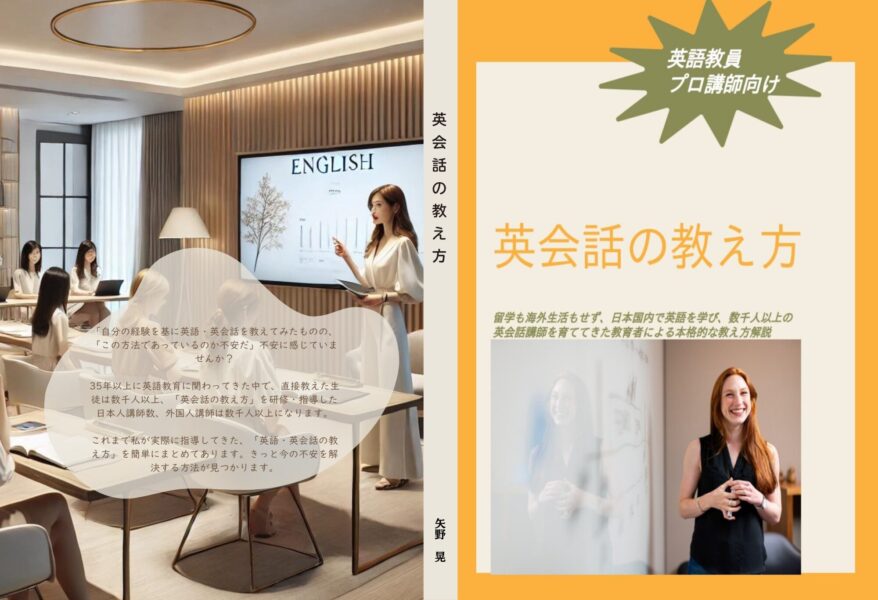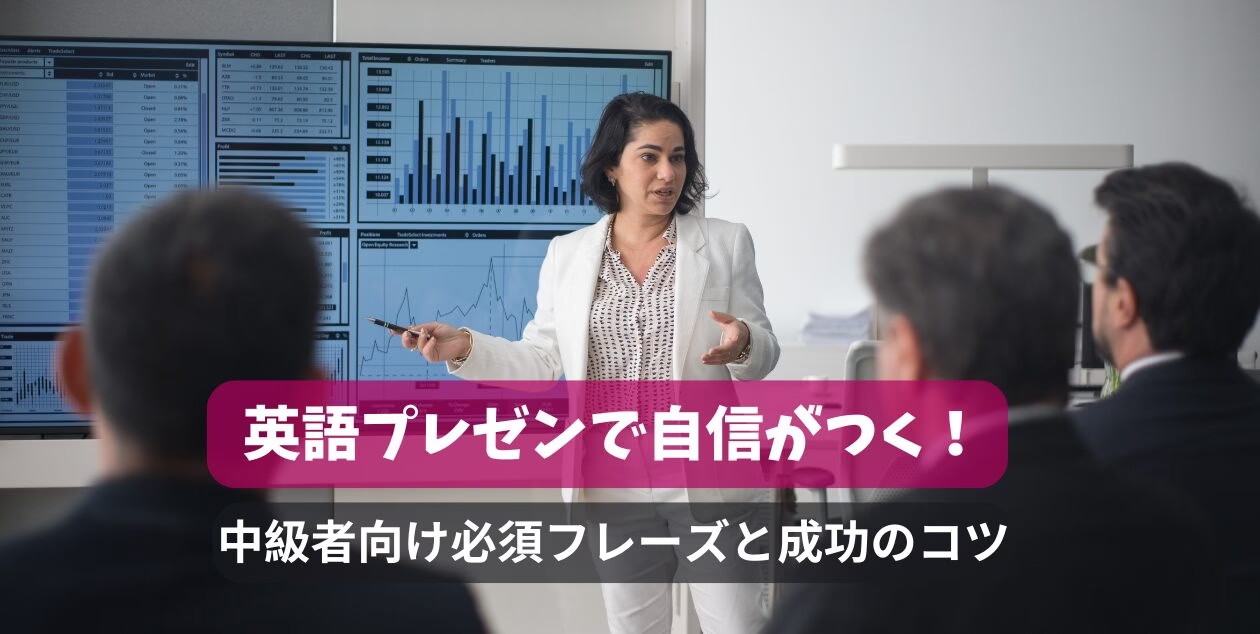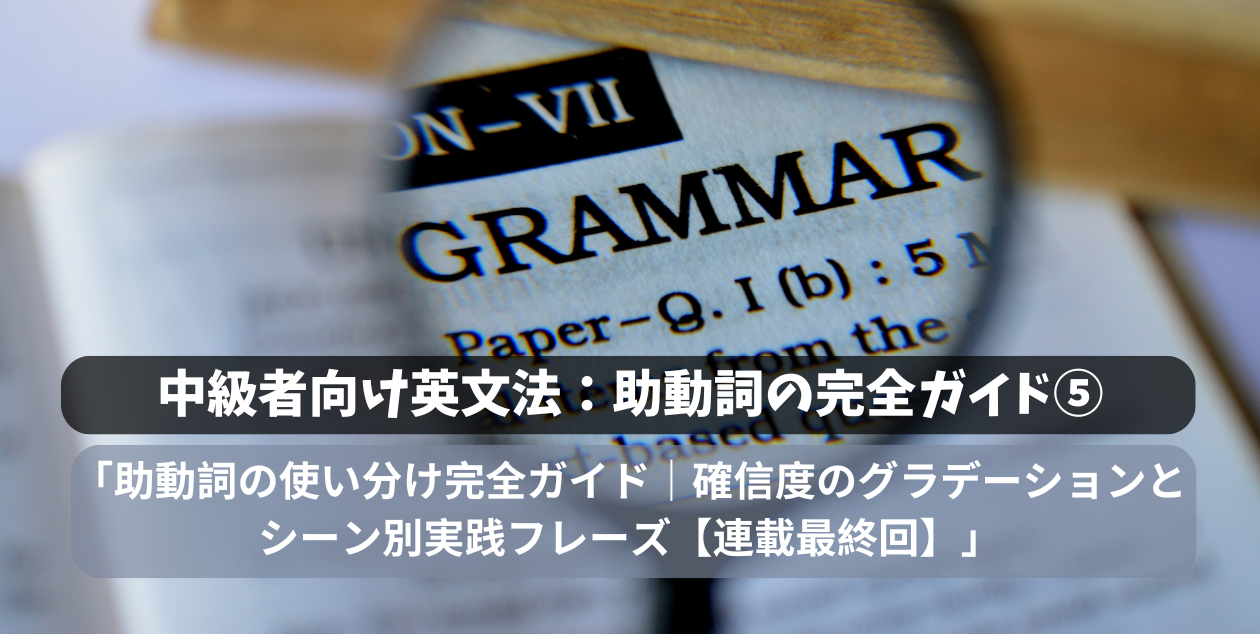グローバル化が進む現代、英語でのプレゼンテーション能力は多くのビジネスパーソンにとって不可欠なスキルです。「英語プレゼンに自信がない」「適切な英語表現が思い浮かばない」といった悩みを抱えている方も多いのではないでしょうか。
この記事では、そんな悩みを解決するために、プレゼンの準備から質疑応答まで、各フェーズで役立つ実践的な英語フレーズを体系的にご紹介します。
導入や本題の展開、強調、まとめなど、プレゼンを成功させるための必須フレーズを発音記号や例文付きで詳しく解説。この記事を読み終える頃には、あなたの英語プレゼンに対する苦手意識がなくなり、自信を持って聴衆を惹きつけられるようになるでしょう。
1. プレゼン準備段階で使える表現

事前準備の基本表現
プレゼンテーションの成功は準備段階で決まると言っても過言ではありません。以下は準備段階でよく使われる重要表現です。
“I’m preparing my slides for the presentation.”
- 発音記号: /aɪm prɪˈpɛrɪŋ maɪ slaɪdz fɔːr ðə ˌprɛzənˈteɪʃən/
- 意味: プレゼン用のスライドを準備しています
- 解説: PowerPointやKeynoteなどでスライドを作成する際の一般的なフレーズ
- 例文: I’m preparing my slides for the presentation tomorrow.
- 和訳: 明日のプレゼン用にスライドを作っています
“I tested the software in advance.”
- 発音記号: /aɪ ˈtɛstɪd ðə ˈsɒftwɛr ɪn ədˈvæns/
- 意味: ソフトウェアを事前にテストしました
- 解説: プレゼン用アプリやツールの動作確認について述べる際に使用
- 例文: I tested the software in advance to make sure there are no issues.
- 和訳: 問題がないように事前にソフトウェアの動作確認をしました
機材確認の表現
“I need to check the projector and the sound system.”
- 発音記号: /aɪ nid tuː tʃɛk ðə prəˈdʒɛktər ənd ðə saʊnd ˈsɪstəm/
- 意味: プロジェクターと音響を確認する必要があります
- 解説: 会場機材の動作確認で使う重要な表現
- 例文: Before starting, I need to check the projector and the sound system.
- 和訳: 始める前に、プロジェクターと音響を確認する必要があります
“Could you help me connect my laptop to the screen?”
- 発音記号: /kʊd juː hɛlp mi kəˈnɛkt maɪ ˈlæpˌtɑːp tuː ðə skriːn/
- 意味: ノートパソコンをスクリーンに接続するのを手伝ってくれますか
- 解説: セットアップや会場準備時の丁寧な依頼表現
- 例文: Could you help me connect my laptop to the screen?
- 和訳: パソコンをスクリーンに接続するのを手伝ってもらえますか
2. 機器・ソフトウェア関連の表現

ソフトウェア説明
“The presentation will be shown using PowerPoint (or Keynote/Google Slides).”
- 発音記号: /ðə ˌprɛzənˈteɪʃən wɪl bi ʃoʊn ˈjuːzɪŋ ˈpaʊərˌpɔɪnt/
- 意味: プレゼンはパワーポイント(または他のソフト)で表示されます
- 解説: 使用ソフトを説明する際に便利な表現
- 例文: The presentation will be shown using PowerPoint.
- 和訳: プレゼン資料はパワーポイントで表示します
操作依頼の表現
“Please switch to the next slide.”
- 発音記号: /pliːz swɪʧ tuː ðə nɛkst slaɪd/
- 意味: 次のスライドに切り替えてください
- 解説: 他人にスライド操作を依頼する時の表現
- 例文: Could you please switch to the next slide?
- 和訳: 次のスライドに切り替えてもらえますか
“Let me play a short video clip.”
- 発音記号: /lɛt mi pleɪ ə ʃɔːrt ˈvɪdioʊ klɪp/
- 意味: 短い動画を再生します
- 解説: デジタル素材を使う際の予告表現
- 例文: Let me play a short video clip to explain this concept.
- 和訳: この概念を説明するため、短い動画を再生します
トラブル対応
“There seems to be a technical issue.”
- 発音記号: /ðɛr siːmz tuː biː ə ˈtɛknɪkəl ˈɪʃuː/
- 意味: 技術的な問題が起きているようです
- 解説: 機器や接続トラブル時の自然な表現
- 例文: There seems to be a technical issue with the projector.
- 和訳: プロジェクターに技術的な問題が起きているようです
“Is the Wi-Fi working?”
- 発音記号: /ɪz ðə ˈwaɪˌfaɪ ˈwɜːrkɪŋ/
- 意味: Wi-Fiは動いていますか
- 解説: オンライン・リモート発表準備時に必須の確認
- 例文: Is the Wi-Fi working? I need it for my live demo.
- 和訳: Wi-Fiは動いていますか?ライブデモで使う必要があります
3. 導入・目的提示の効果的な表現

オープニング挨拶
“Good morning/afternoon, everyone.”
- 発音記号: /ɡʊd ˈmɔːrnɪŋ/ /ˈæftərˌnuːn ˈevriwʌn/
- 意味: みなさん、おはようございます/こんにちは
- 解説: プレゼンテーションの冒頭で聴衆に丁寧に挨拶する定番表現
- 例文: Good morning, everyone. Thank you for coming today.
- 和訳: みなさん、おはようございます。本日はお越しいただきありがとうございます
導入のバリエーション
“Let me start by…”
- 発音記号: /ˈlɛt mi stɑːrt baɪ/
- 意味: ~から始めさせてください
- 解説: 話のスタート地点を示す柔らかい導入表現
- 例文: Let me start by introducing myself.
- 和訳: まず自己紹介から始めさせてください
“Let’s kick off by discussing…”
- 発音記号: /lɛts kɪk ɒf baɪ dɪˈskʌsɪŋ/
- 意味: ~から始めましょう
- 解説: カジュアルで現代的、TEDやチームプレゼンでよく使用される表現
- 例文: Let’s kick off by discussing the current market trends.
- 和訳: まずは現在の市場動向から始めましょう
関心を引く導入
“Did you know that…?”
- 発音記号: /dɪd juː noʊ ðæt/
- 意味: ~を知っていましたか?
- 解説: 聴衆の関心を引き付ける導入や注目させるテクニック
- 例文: Did you know that 70% of people prefer online meetings now?
- 和訳: 今や70%の人がオンライン会議を好むってご存知ですか?
目的の明示
“The purpose of this presentation is to…”
- 発音記号: /ðə ˈpɜːrpəs əv ðɪs ˌprɛzənˈteɪʃən ɪz tuː/
- 意味: このプレゼンの目的は~です
- 解説: プレゼンの主旨・ゴールをはっきり伝える重要な表現
- 例文: The purpose of this presentation is to discuss our new marketing strategy.
- 和訳: このプレゼンの目的は、私たちの新しいマーケティング戦略について話すことです
“First, I’ll give you a brief overview of…”
- 発音記号: /fɜːrst aɪl ɡɪv juː ə briːf ˈoʊvərˌvjuː əv/
- 意味: まず、~の概要を説明します
- 解説: 話の流れや段取りを明示し、聴衆に安心感を与える表現
- 例文: First, I’ll give you a brief overview of the project.
- 和訳: まず最初に、このプロジェクトの概要を説明します
4. 本題展開で使える表現

話題転換
“Let’s move on to…”
- 発音記号: /lɛts muːv ɑːn tuː/
- 意味: ~に進みましょう
- 解説: 話題を次に進めたいときの自然なつなぎ表現
- 例文: Let’s move on to the next point.
- 和訳: 次のポイントに進みましょう
“Let’s move forward to the next section.”
- 発音記号: /lɛts muːv ˈfɔːrwərd tuː ðə nɛkst ˈsɛkʃən/
- 意味: 次のセクションに進みましょう
- 解説: 大きな話題転換に有効な表現
- 例文: Let’s move forward to the next section—our financial results.
- 和訳: 次のセクション(財務結果)に進みましょう
視覚資料への言及
“As you can see on this slide…”
- 発音記号: /æz juː kən siː ɑːn ðɪs slaɪd/
- 意味: このスライドで分かるように
- 解説: スライドや図表に注意を向けたいとき
- 例文: As you can see on this slide, our sales have increased.
- 和訳: このスライドからもわかるように、売上は伸びました
“As illustrated on this chart, …”
- 発音記号: /æz ˈɪləˌstreɪtɪd ɒn ðɪs ʧɑrt/
- 意味: この図(グラフ)に示す通り、~
- 解説: データや図に根拠付けたいときに使用
- 例文: As illustrated on this chart, revenue has doubled since last year.
- 和訳: このグラフに示すとおり、昨年から収益が2倍になりました
具体例の提示
“To illustrate this point…”
- 発音記号: /tuː ˈɪləstreɪt ðɪs pɔɪnt/
- 意味: この点を説明するために
- 解説: 例を使い具体的に説明する導入
- 例文: To illustrate this point, let me share some data.
- 和訳: この点を説明するために、データをご紹介します
“Let’s take a deeper look at this data.”
- 発音記号: /lɛts teɪk ə ˈdipər lʊk æt ðɪs ˈdeɪtə/
- 意味: このデータをさらに詳しく見てみましょう
- 解説: グラフや統計資料を紹介・分析する時に便利
- 例文: Let’s take a deeper look at this data on sales performance.
- 和訳: 売上データをさらに詳しく見てみましょう
5. 強調・詳細説明の表現

重要ポイントの強調
“It’s important to note that…”
- 発音記号: /ɪts ɪmˈpɔːrtənt tuː noʊt ðæt/
- 意味: ~は重要な点です
- 解説: 聴衆に特に注意してほしい内容に使う
- 例文: It’s important to note that our budget is limited.
- 和訳: 予算に限りがあることは重要な点です
“Let me emphasize that…”
- 発音記号: /lɛt miː ˈɛmfəˌsaɪz ðæt/
- 意味: ~を強調させてください
- 解説: 重要な要素を目立たせる表現
- 例文: Let me emphasize that this is only a temporary solution.
- 和訳: これはあくまで一時的な解決策だと強調させてください
詳細説明
“Let me elaborate further on…”
- 発音記号: /ˈlɛt mi ɪˈlæbəˌreɪt ˈfɜːrðər ɑːn/
- 意味: ~についてさらに詳しく説明させてください
- 解説: 詳細や裏付けを加えたいときに便利
- 例文: Let me elaborate further on our research findings.
- 和訳: 私たちのリサーチ結果についてさらに詳しく説明させてください
言い換え・要約
“In other words, …”
- 発音記号: /ɪn ˈʌðər wɜːrdz/
- 意味: 言い換えると
- 解説: 難解な内容を易しく言い換える際に使う
- 例文: In other words, we expect the project to finish ahead of schedule.
- 和訳: 言い換えると、このプロジェクトは予定より早く終わる見込みです
“What this means is…”
- 発音記号: /wʌt ðɪs minz ɪz/
- 意味: これはつまり~ということです
- 解説: 分析やまとめを一言で伝える型
- 例文: What this means is, we need to invest more in technology.
- 和訳: これはつまり、もっとテクノロジーに投資が必要ということです
6. まとめ・転換の表現

セクションのまとめ
“To sum up…”
- 発音記号: /tuː sʌm ʌp/
- 意味: 要約すると
- 解説: セクションや話の終わりに要点を振り返る表現
- 例文: To sum up, our product is affordable and effective.
- 和訳: 要約すると、私たちの製品は手頃で効果的です
“Before I finish, let’s review the main points.”
- 発音記号: /bɪˈfɔːr aɪ ˈfɪnɪʃ, lɛts rɪˈvjuː ðə meɪn pɔɪnts/
- 意味: 終わる前に主な点をおさらいしましょう
- 解説: 話の締め、新たなQ&A前の整理に有効
- 例文: Before I finish, let’s review the main points we discussed today.
- 和訳: 終わる前に、本日話した主な点を振り返りましょう
プレゼン終了
“That brings me to the end of my presentation.”
- 発音記号: /ðæt brɪŋz miː tuː ðiː ɛnd əv maɪ ˌprɛzənˈteɪʃən/
- 意味: これで私のプレゼンを終わります
- 解説: 本論最後の定型挨拶。とても丁寧な表現
- 例文: That brings me to the end of my presentation. Thank you for your attention.
- 和訳: これで私のプレゼンを終わります。ご清聴ありがとうございました
“Thank you all for listening.”
- 発音記号: /θæŋk juː ɔːl fɔːr ˈlɪs.n.ɪŋ/
- 意味: ご清聴ありがとうございました
- 解説: シンプルで万能な締め言葉
- 例文: Thank you all for listening.
- 和訳: ご清聴ありがとうございました
7. 質疑応答での対応表現

Q&A開始
“If you have any questions, please feel free to ask now.”
- 発音記号: /ɪf juː hæv ˈɛni ˈkwɛs.tʃənz, pliːz fil friː tuː æsk naʊ/
- 意味: 質問があればどうぞ
- 解説: シンプルで丁寧なQ&A開始フレーズ
- 例文: If you have any questions, please feel free to ask now.
- 和訳: ご質問があればどうぞ自由にお尋ねください
質問への対応
“Could you please repeat the question?”
- 発音記号: /kʊd juː pliːz rɪˈpiːt ðə ˈkwɛs.tʃən/
- 意味: 質問をもう一度繰り返していただけますか
- 解説: 質問が聞き取りにくい・不明確な時に使う
- 例文: Sorry, could you please repeat the question?
- 和訳: すみません、質問をもう一度おっしゃっていただけますか
“Does this answer your question?”
- 発音記号: /dʌz ðɪs ˈænsər jɔːr ˈkwɛs.tʃən/
- 意味: ご質問への回答になっていますでしょうか
- 解説: 質問への返答後に確認する丁寧な表現
- 例文: Does this answer your question?
- 和訳: ご質問への回答になっていますでしょうか
回答できない場合
“I’m afraid I’m unable to answer that at the moment.”
- 発音記号: /aɪm əˈfreɪd aɪm ʌnˈeɪbəl tuː ˈænsər ðæt æt ðə ˈmoʊmənt/
- 意味: 残念ながら、今はお答えできません
- 解説: 答えが分からないときの丁重な表現
- 例文: I’m afraid I’m unable to answer that at the moment. Perhaps I can get back to you later.
- 和訳: 申し訳ありませんが、今はお答えできません。後ほどご連絡いたします
“I’ll get back to you with the answer after some research.”
- 発音記号: /aɪl ɡɛt bæk tuː juː wɪð ði ˈænsər ˈæftər sʌm rɪˈsɜːrtʃ/
- 意味: 調べた後でお答えします
- 解説: その場ですぐ答えられない時に丁寧に対応する表現
- 例文: I’ll get back to you with the answer after some research.
- 和訳: 後で調べてからご回答いたします
8. 実践的な会話例

準備段階の会話
A: Have you thought about how to structure your presentation?
B: Yes, I’m planning to divide it into three main parts: the introduction, the main analysis, and the conclusion. What about you?
A: That sounds good. I’m thinking of starting with a brief background, then going into the current challenges, and ending with our proposed solutions.
B: Nice. Are you including any data or visuals to support your points?
A: Definitely. I will use charts to show the trends and maybe a short video clip to illustrate the customer feedback.
B: Good idea. I want to include a case study to make it more concrete. Do you think it fits in the main analysis?
A: Absolutely. A case study works well there. Also, don’t forget to highlight the key takeaways at the end of each section.
B: Right. I’ll prepare a summary slide after each part.
A: How long is your total presentation?
B: Around 15 minutes, including Q&A. I plan to spend about 4 minutes on the introduction, 8 on the body, and 3 on the conclusion.
A: Sounds well balanced. I should rehearse timing too. Maybe we should do a practice run together.
B: Great idea! We can give each other feedback and adjust as needed.
A: Perfect. Let’s aim to finish our drafts by the end of the week.
B: Agreed. I’ll send you my slides when they’re ready.
A: Thanks! Looking forward to it.
A: プレゼンテーションの構成について考えた?
B: はい、3つの主要なパートに分けるつもりです。導入、本題の分析、そして結論です。あなたはどうですか?
A: いいですね。私は、簡単な背景説明から始めて、現在の課題について話し、その後に提案する解決策で締めくくるつもりです。
B: いいですね。ポイントを裏付けるデータやビジュアルは入れますか?
A: もちろんです。トレンドを示すグラフを使い、顧客のフィードバックを説明するために短い動画クリップも使うかもしれません。
B: いいアイデアですね。私は、もっと具体的にするためにケーススタディも入れたいと思います。それは本題部分に入れてもいいと思いますか?
A: もちろん、本題にケーススタディはぴったりです。それから、各セクションの最後に重要ポイントを強調するのも忘れないでください。
B: 了解です。パートごとにまとめのスライドを用意します。
A: プレゼン全体の時間はどのくらいですか?
B: 質疑応答も含めて約15分です。導入に4分、本題に8分、結論に3分くらい使う予定です。
A: バランスが良さそうですね。時間配分の練習もしないと。よかったら一緒にリハーサルしましょうか。
B: いいですね!お互いにフィードバックして調整できますね。
A: それは最高です。今週末までにドラフトを仕上げましょう。
B: 賛成です。スライドができたら送りますね。
A: ありがとう!楽しみにしています。
プレゼンテーションの感想
A: So, what did you think of the new product presentation?
B: Overall, I thought it was really well done. The presenter explained the product features clearly, especially the new AI capabilities. It made the advantages easy to understand.
A: Yes, I agree. I liked how they showed the live demo of the app. It gave a concrete sense of how user-friendly the interface is.
B: Exactly. The visuals were sharp, and the comparison charts against competitor products helped highlight the unique selling points.
A: One thing I thought could be improved was the explanation of the pricing model. It felt a bit rushed and confusing.
B: That’s true. I was also hoping for more information on the after-sales support and warranty. Those are important factors for potential customers.
A: Right. But I really appreciated the part where they discussed the environmental benefits of the product. That’s definitely a strong selling point nowadays.
B: Definitely. And the Q&A session was handled quite well. The presenter was honest about some limitations but emphasized the upcoming updates.
A: Overall, I feel like it was convincing and professional, but a little more detail on pricing and support would make it even better.
B: Agreed. It gave me a clear picture of the product’s value, which will help us when we talk to clients.
A: Yeah, I’m looking forward to working with this product once it launches.
B: Me too. Let’s keep an eye out for any additional materials or training sessions they might provide.
A: では、新製品のプレゼンテーションはどう思いましたか?
B: 全体的に、とてもよくできていると思いました。発表者は製品の機能をはっきりと説明していて、特に新しいAIの能力については分かりやすかったです。利点が理解しやすかったですね。
A: そうですね。アプリのライブデモを見せてくれたところもよかったと思います。ユーザーインターフェースがどれだけ使いやすいかが具体的に伝わりました。
B: その通りです。ビジュアルも鮮明で、競合製品との比較チャートが製品の独自の強みを際立たせていました。
A: ただ、価格モデルの説明が少し急ぎすぎていて分かりにくかったのが気になりました。
B: そうですね。アフターサポートや保証についてもっと情報が欲しかったです。潜在的な顧客にとっては重要なポイントですから。
A: そうですね。でも、製品の環境に優しい点について話していた部分は本当に良かったと思います。今の時代、これは強いセールスポイントですよね。
B: まったくその通りです。それに質疑応答の時間も上手く対応していました。発表者は限界点についても正直に話し、今後のアップデートを強調していましたし。
A: 全体としては、説得力があってプロフェッショナルな印象でしたが、価格やサポートの部分にもう少し詳しさがあればさらに良かったですね。
B: 同感です。製品の価値がはっきりと見えたので、クライアントに説明する際に役立ちそうです。
A: うん、発売されたらこの製品を使うのが楽しみです。
B: 私もです。追加の資料やトレーニングセッションがあれば、ぜひチェックしましょう。
9. プレゼン実践例とコツ

プレゼン構成例
Slide 1: Opening and Introduction
Good morning, everyone.
Thank you for joining us today.
Let me begin by introducing our brand-new product: the EcoSmart Water Bottle.
(Pause for atmosphere, then move to next slide)
Now, let’s move on to the product overview.
Slide 2: Product Overview
The purpose of this presentation is to show you the unique features of EcoSmart, how it stands out against competitors, and the benefits you get with our launch offer.
First, I’ll give you a brief overview of the EcoSmart Water Bottle’s main functions.
As you can see on this slide, it includes a built-in UV-C sterilizer and a digital temperature display.
(Next slide coming up)
Let’s move on to the product features.
Slide 3: Key Features
The EcoSmart keeps water cold for up to 24 hours and sterilizes it with just one touch of a button.
To illustrate this point, let me play a short video clip demonstrating the sterilization process in action.
(After video)
What this means is you can always enjoy clean and fresh water wherever you are.
(Prepare to change slide)
Next, I will discuss our commitment to sustainability.
Slide 4: Eco-Friendly Materials
Let me emphasize that the EcoSmart Water Bottle is made entirely from 100% recycled materials, making it an environmentally responsible choice.
In other words, by choosing our product, you’re supporting a greener planet.
(Switching topics)
Let’s move forward to the competitive advantages.
Slide 5: Competitive Advantages
As illustrated on this chart, EcoSmart eliminates 99.9% of bacteria, whereas many competing bottles manage only around 80%.
It’s important to note that our launch offer includes a two-year warranty and free shipping.
(Getting ready for summary)
Now, let’s review the main points before we finish.
Slide 6: Summary and Closing
To sum up, EcoSmart is innovative, eco-friendly, highly effective, and offers excellent value for early buyers.
That brings me to the end of my presentation. Thank you all for your attention.
If you have any questions, please feel free to ask now.
スライド 1:オープニングと導入
皆さん、おはようございます。
本日はご参加いただきありがとうございます。
まずは、私たちの新製品、「エコスマート・ウォーターボトル」をご紹介させてください。
(雰囲気をつかんでから、次のスライドへ)
それでは、製品の概要に移りましょう。
スライド 2:製品概要
このプレゼンテーションの目的は、エコスマートのユニークな特徴、競合製品との違い、そして発売キャンペーンの特典をご紹介することです。
まずは、エコスマート・ウォーターボトルの主な機能について簡単にご説明します。
(このスライドをご覧の通り、)内蔵のUV-C殺菌機能とデジタル温度表示が付いています。
(次のスライドに進みます)
製品の特徴について見ていきましょう。
スライド 3:主な特徴
エコスマートは、最大24時間冷たいまま水をキープし、ワンタッチで殺菌もできます。
この点を説明するために、殺菌のプロセスを示した短い動画をご覧ください。
(動画再生後)
つまり、どこにいても常に清潔で新鮮な水を楽しめるということです。
(スライドを切り替えます)
次に、私たちの環境への取り組みについてお話しします。
スライド 4:環境にやさしい素材
エコスマート・ウォーターボトルは100%リサイクル素材で作られていることを強調させてください。これは環境に配慮した選択です。
言い換えれば、私たちの製品を選ぶことは、より環境に優しい地球を支援することになります。
(話題を変えて)
競合製品との比較に移りましょう。
スライド 5:競合優位点
このグラフに示すように、エコスマートは99.9%の細菌を除去しますが、多くの競合製品は約80%にとどまっています。
特に重要なのは、発売キャンペーンでは2年間の保証と送料無料が付いている点です。
(まとめに入ります)
発表の締めに入る前に、ポイントを振り返りましょう。
スライド 6:まとめと締めくくり
まとめると、エコスマートは革新的で環境に優しく、高い効果があり、早期購入者には非常にお得な価値を提供します。
これで私のプレゼンテーションは終了です。皆さま、ご清聴ありがとうございました。
ご質問があれば、どうぞお気軽にお尋ねください。
“How to Deliver an Effective Presentation to English-Speaking Business people”を読んでみましょう!

How to Deliver an Effective Presentation to English-Speaking Business people
Preparation Stage
Delivering a presentation that resonates with English-speaking businesspeople begins long before you enter the meeting room. Preparation is key to making a strong impression.
1. Know Your Audience:
Understand who will attend your presentation. Research their positions, backgrounds, and expectations. Tailoring your content to their interests and knowledge level shows respect and increases engagement.
2. Structure Your Content Clearly:
English-speaking professionals expect a logical, easy-to-follow structure. Organize your ideas with a clear introduction, body, and conclusion. Use transitions like “First,” “Next,” and “Finally,” to guide listeners through your story.
3. Prepare Visual Aids:
Use PowerPoint slides or other visuals to support your message, not to replace it. Each slide should highlight key points with minimal text. Use graphs, charts, and images to make data easy to understand.
4. Rehearse Aloud:
Practice presenting your material out loud, not just in your head. Record yourself and check your pronunciation, speed, and intonation. Rehearsing with colleagues or in front of a mirror can boost confidence and help identify weak points.
5. Check Technical Aspects:
Arrive early to test the projector, sound system, and software. Make sure your laptop connects smoothly and your files display correctly. Bringing a backup (USB drive or printed handouts) is also wise.
6. Anticipate Questions:
Prepare for the Q&A session by listing possible questions and practicing your answers in English. This demonstrates confidence and professionalism.
Delivery Stage
On the day of your presentation, your approach and communication style will decide how memorable and persuasive your message is.
1. Start with a Confident Opening:
Greet the audience with a smile and clear eye contact. In English business culture, a strong, friendly start is important. State the purpose of your presentation early, for example, “Today, I’d like to introduce…”
2. Speak Clearly and at the Right Pace:
Avoid speaking too quickly. Use simple, direct language and short sentences to make your ideas more accessible. Articulate key terms and use pauses to let important points sink in.
3. Use Signposting Expressions:
Guide your audience through your presentation with phrases like “Let me start by…,” “As you can see on this slide…,” and “To sum up…”. These expressions help non-native listeners (and all audiences) follow your structure.
4. Engage the Audience:
Encourage interaction by asking rhetorical questions or seeking feedback (“Does that make sense?”). Make eye contact around the room instead of reading directly from your slides. Smile and use positive gestures.
5. Handle Questions Professionally:
When questions come up, listen attentively. If you don’t understand, politely ask for clarification (“Could you please repeat the question?”). If you don’t have the answer, be honest and offer to follow up after the session.
6. Finish Strong:
Restate your main points and conclude clearly with a phrase like “That brings me to the end of my presentation. Thank you all for your attention.” Invite questions and respond with patience and clarity.
An effective business presentation in English is not just about language ability, but about clear objectives, logical structure, and engaging delivery. By preparing thoroughly and adopting a confident, listener-friendly style, Japanese professionals can deliver presentations that leave a strong, positive impression in English-speaking business environments.
英語圏のビジネスマンに伝わる効果的なプレゼンテーションの方法
準備段階
英語圏のビジネスマンに響くプレゼンテーションは、会議室に入るずっと前から始まっています。準備こそが強い印象を残す鍵です。
1. 聴衆を知ること:
プレゼンに参加する人たちが誰なのかを理解しましょう。彼らの役職や背景、期待をリサーチします。彼らの関心や知識レベルに合わせた内容にすることで、敬意を示し、聴衆の興味も高まります。
2. 内容を明確に構成すること:
英語圏のビジネスパーソンは、論理的でわかりやすい構成を期待します。導入、本題、結論をはっきり区切ってアイデアを整理しましょう。「まず」、「次に」、「最後に」などの接続詞を使って、聞き手をストーリーに誘導します。
3. 視覚資料を用意すること:
パワーポイントや他の視覚資料は、メッセージを補うためのものであり、置き換えるものではありません。スライドには重要なポイントだけを簡潔に載せ、グラフやチャート、写真などを使ってデータを理解しやすくしましょう。
4. 声に出してリハーサルをすること:
頭の中で考えるだけでなく、声に出して練習しましょう。自分の発音や話すスピード、イントネーションを録音して確認するのも効果的です。同僚や鏡の前で練習すると自信がつき、弱点を見つけやすくなります。
5. 技術面の確認をすること:
会場には早めに到着し、プロジェクターや音響設備、ソフトウェアの動作確認をしましょう。パソコンの接続やファイルの表示に問題がないかチェックします。USBメモリや資料の紙コピーを持参しておくと安心です。
6. 質疑応答に備えること:
質問タイムに備え、予想される質問リストを作って英語での回答を練習しておきましょう。これが自信とプロフェッショナリズムの表れになります。
実施段階
プレゼン当日は、話し方やコミュニケーション方法が、伝えたい内容の印象を左右します。
1. 自信を持って始めること:
笑顔で挨拶し、はっきりとアイコンタクトを取ります。英語圏のビジネス文化では、堂々として親しみやすい開始が重要です。冒頭で「本日は~をご紹介します」と目的を述べましょう。
2. 明瞭で適切な速度で話すこと:
早口にならないよう注意し、シンプルで直接的な言葉や短い文を使いましょう。重要な単語ははっきり発音し、ポイントごとに間を取り、聴衆に理解する時間を与えます。
3. 案内表現を使うこと:
「まず~から始めましょう」、「このスライドをご覧ください」、「まとめると~」などの表現で、話の流れをわかりやすく示します。これは非ネイティブやすべての聴衆に理解を助けます。
4. 聴衆を巻き込むこと:
修辞的な質問をしたり、「理解できましたか?」と問いかけたりして、反応を促しましょう。スライドばかり見ず、部屋のあちこちを見渡し目線を配り、微笑みや前向きなジェスチャーも使います。
5. 質問に丁寧に対応すること:
質問が出たらよく聞き、わからなければ「もう一度質問をお聞かせいただけますか?」と丁寧に頼みます。答えられない時は正直に「その点については後ほど調査してお返事します」と伝えましょう。
6. 力強く締めくくること:
主要なポイントを再度述べ、「これでプレゼンテーションを終わります。ご清聴ありがとうございました」とはっきり締めます。質問を歓迎し、根気よくわかりやすく答えましょう。
英語でのビジネスプレゼンテーションは、単なる語学力だけでなく、明確な目的、論理的な構成、聞き手を意識した伝え方が重要です。十分な準備と自信を持った聞き手に優しい話し方で、日本人ビジネスパーソンも英語圏のビジネスシーンで好印象を与えるプレゼンができます。
まとめ

本記事では、英語プレゼンを成功させるための必須フレーズとコツを詳しく解説しました。プレゼンの準備から、導入、本題、そして質疑応答に至るまで、様々な場面で使える英語表現を習得できたのではないでしょうか。
ご紹介した例文を参考に、まずは定型文から使い始めてみてください。繰り返し練習することで、自然と自分の言葉としてビジネス英語が身につき、プレゼン全体の流れをスムーズにコントロールできるようになります。
英語プレゼンは単なる語学力だけでなく、自信と準備が成功の鍵です。この記事で得た知識と実践的なフレーズを活用し、英語でのプレゼンテーションをあなたの強みとして活かしましょう。
プレゼン成功のコツ
- 準備段階での表現練習
- 機材確認の表現を事前に覚えておく
- トラブル時の対応表現も準備しておく
- 聴衆との関係構築
- 導入部で関心を引く質問を使う
- 適切な挨拶で良い印象を与える
- 構造的な話の進め方
- セクション間の転換表現を活用
- 要点のまとめを定期的に行う
- 視覚資料の効果的活用
- グラフや図表への適切な言及
- 動画やデモンストレーションの効果的な導入
グローバルビジネスの場で活躍するために、これらの表現を効果的に活用し、自信を持って英語プレゼンテーションに臨んでください。継続的な練習により、必ず上達を実感できるはずです。
英語・英会話の基礎を学びたい方はこちらから! ↓

語彙力強化したい方はこちらから! ↓

